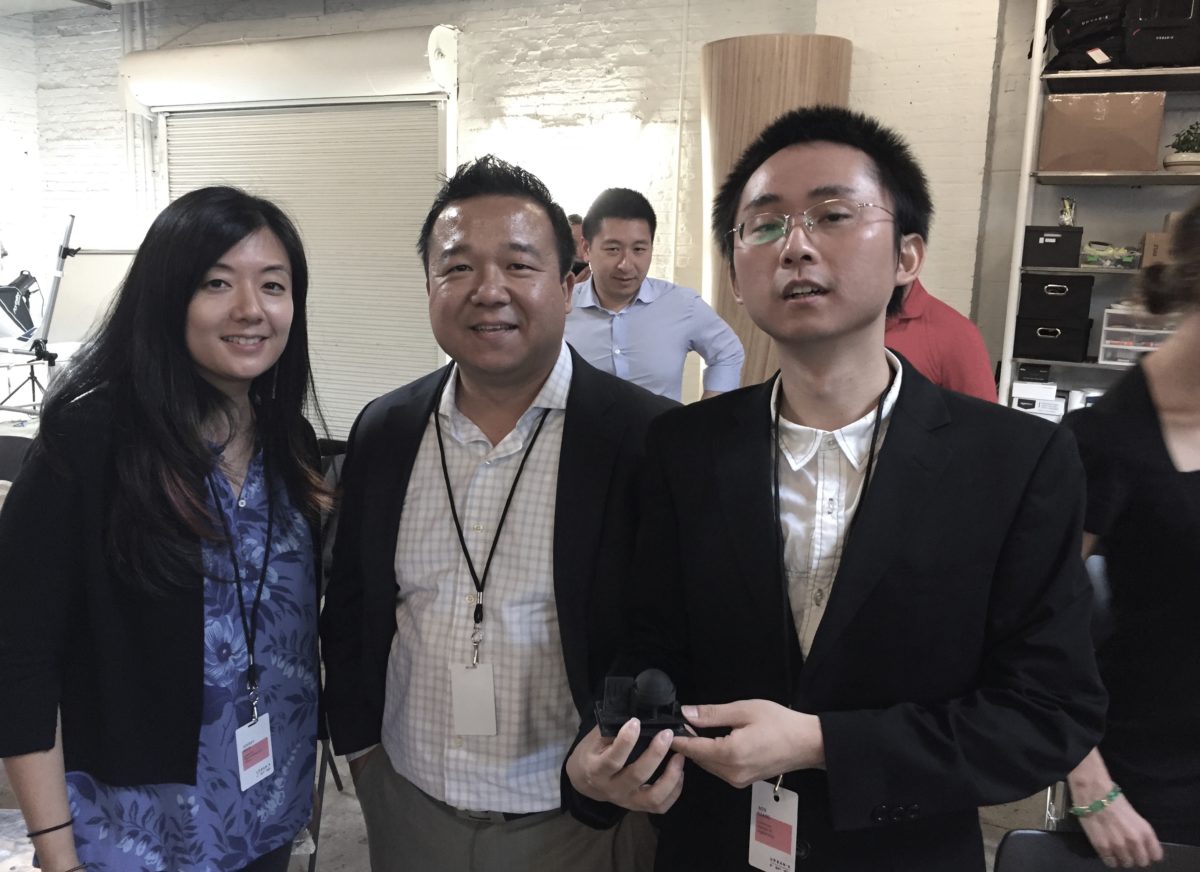Superfast millimeter wavelength technology may have the most promising hype-to-potential ratio of anything out there (looking at you, crypto). That we might be able to broadcast over completely pristine areas of the electromagnetic spectrum could allow for a lot more communication, a lot faster.
That’s what Lunewave has in mind. We met the company last fall, at Greenpoint accelerator Urban-X, where it is one of the current cohort members. Lunewave wants to build radar sensors that communicate over the millimeter wavelength part of the wireless spectrum. Such antennae would have applications for tons of industries, but autonomous cars and drones are two of the most obvious.
Using these upper frequencies of the electromagnetic spectrum is the bedrock of some of the predictions we heard at the eye-opening Brooklyn 5G Summit this spring, where experts from academia and major corporations talked about what the future of this technology could hold. Well, with Lunewave, there’s a startup building to those dreams, and right here in Brooklyn.
We had a chance to ask the founder some questions about what they’re working on. The following is lightly edited for length:
What was the problem you saw that you set out to solve?
Over a million fatalities occur in traffic accidents every year around the world, and over 90 percent of car crashes are due to human error such as distracted driving. People also spend a lot of time behind the wheel, especially in areas of congestion. The amount of time a person spends driving every year is said to be equal to almost two months of working full-time. In addition to increasing safety and productivity, autonomous transportation will enable better mobility for a significant portion of the population (e.g. elderly, disabled).
How are you solving it?
A critical component of driverless cars is sensors, which act as the “eyes” of the car, detecting objects in the surrounding environment and informing the car to take appropriate action. Lunewave is developing a robust new radar sensor system that offers advanced performance features such as long range high resolution detection with a 360-degree field of view, with undiminished performance even in poor weather. By offering capabilities normally only achievable with the use of multiple sensors, our sensor effectively reduces complexity and cost for car manufacturers, which in turn will hopefully accelerate the deployment of autonomous cars.
Who are your founders?
Lunewave has four cofounders:
Hao Xin (CTO): Tenured professor of Electrical and Computer Engineering at University of Arizona with a Ph.D. in physics from MIT.
Min Liang (Director of Engineering): Expert in 3D-printed microwave/THz components, 3D-printed lens antenna, Luneburg lens-based direction finding and phased array with a Ph.D. in Electrical and Computer Engineering from the University of Arizona.
Jiang Xin (CEO): Extensive experience doing business development, strategic partnerships, and management consulting in Fortune 500 across various industries, including insurance and technology, with an MBA from Carnegie Mellon University.
Sherry Byon (Chief Commercial Officer): Experience with corporate and technology strategy along with product development/management in Fortune 500 across various industries, including tech and telecommunications, with an MBA from Georgetown University.
What are you hoping to get out of being in the Urban-X accelerator?
Being in the automotive space, participating in the URBAN-X program is a natural fit given BMW/Mini’s involvement. By having access to experts in technology, design, and startup ventures, we hope to refine and accelerate product development and fundraising, with the ultimate goal of commercializing our technology.







